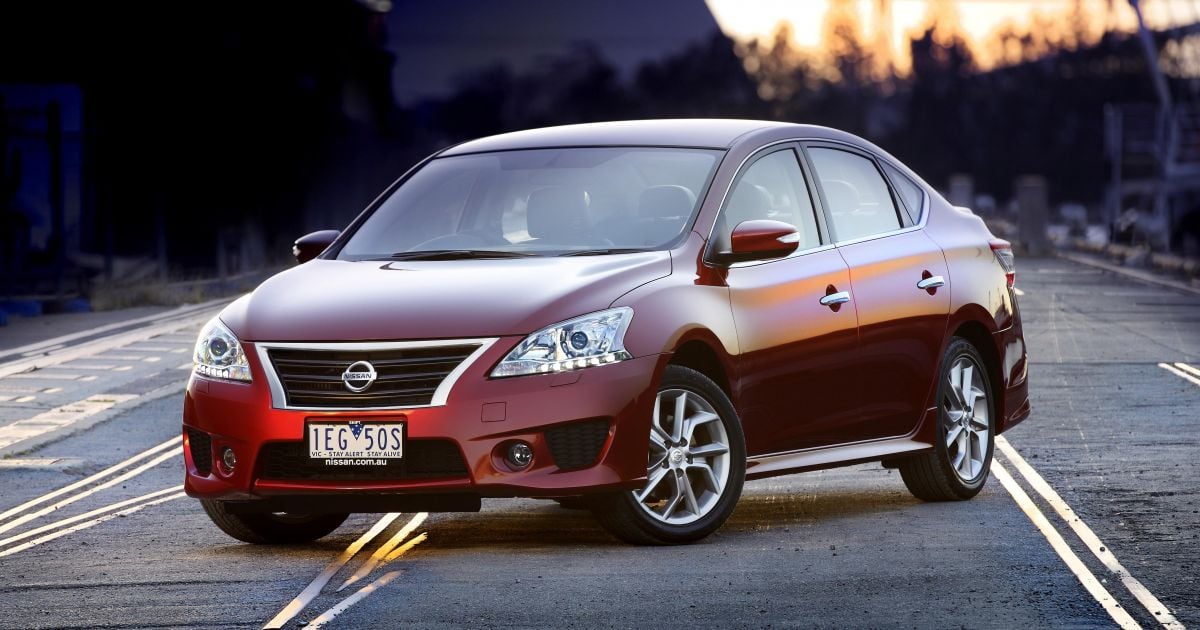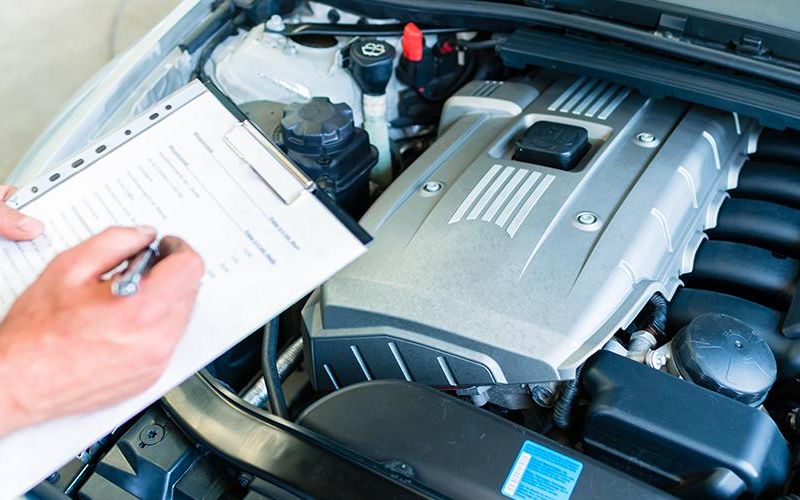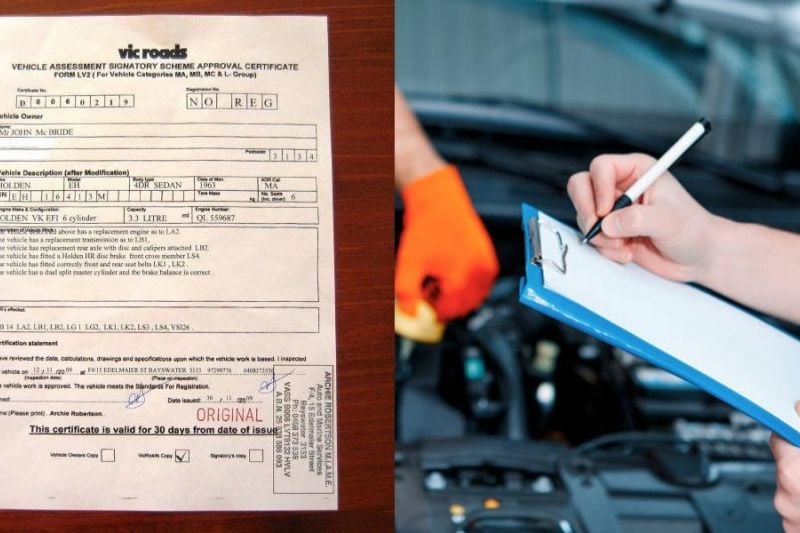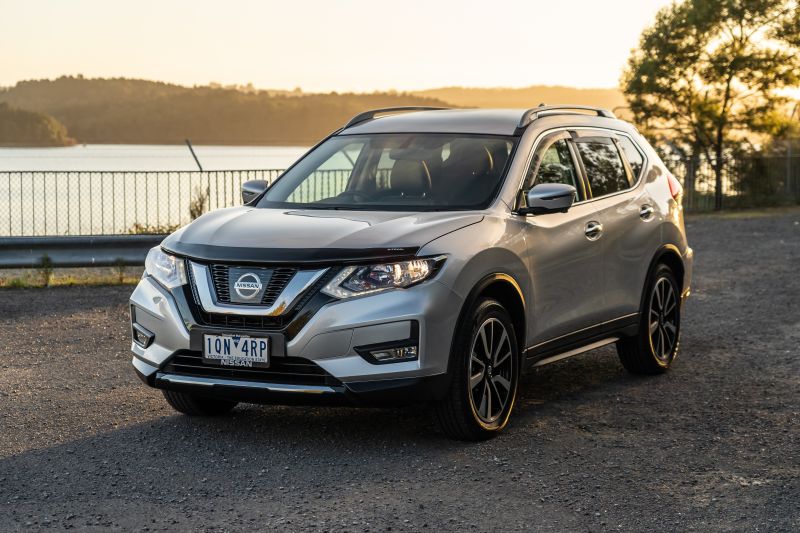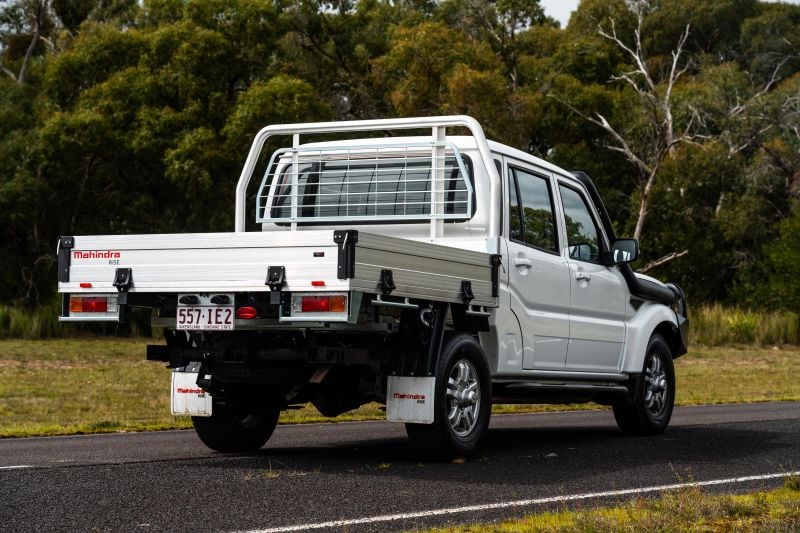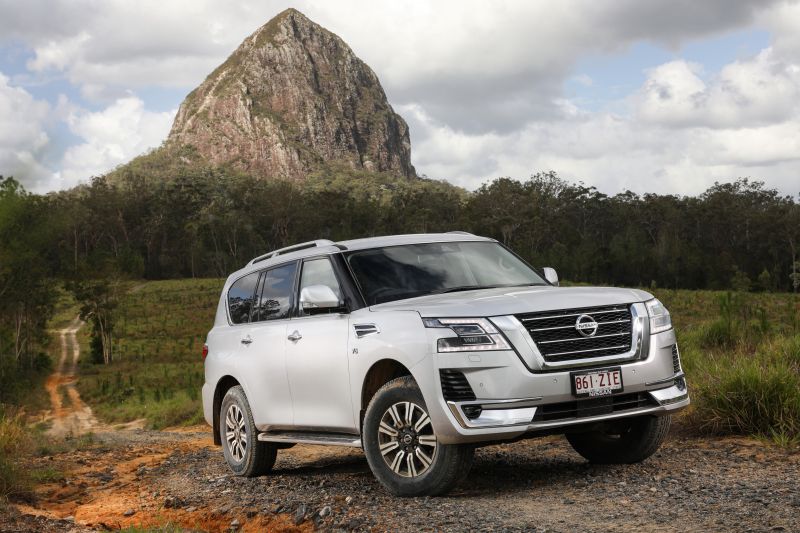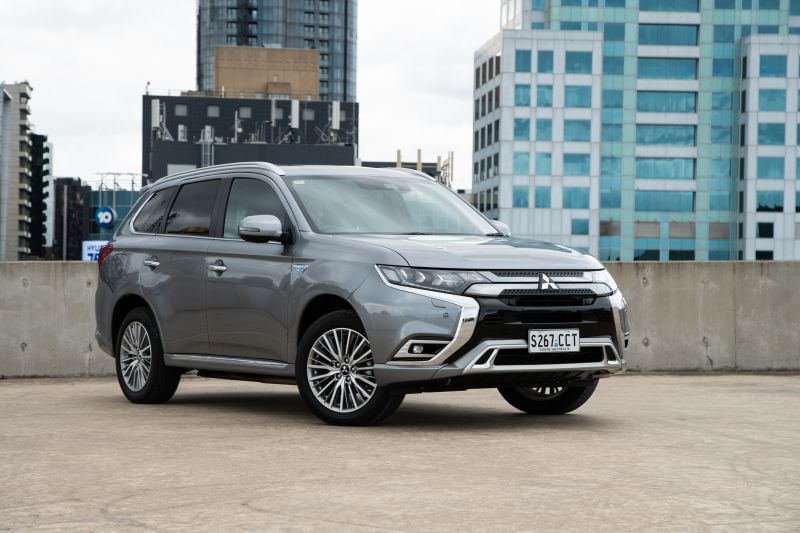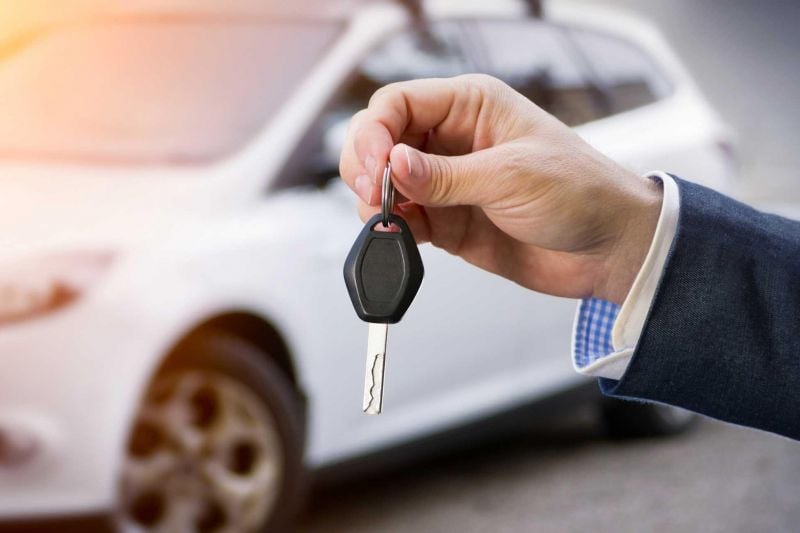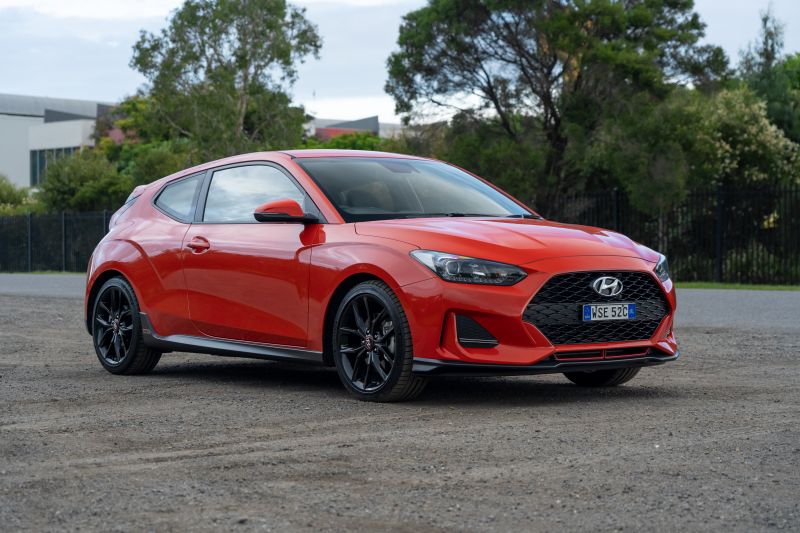Paperwork is a necessary evil when selling a car – not just to ensure a seamless transition of the vehicle from you, the seller, to its new owner, but also to protect yourself legally.
In this article we’ll detail what you need to do depending on your state or territory – and we’ve included four additional actions to remember after you’ve sold the car.
No matter where you live, or if the car is registered or unregistered, make sure you exchange a Bill of Sale – a tax invoice, receipt, proof of purchase.
It’s normally not required, but it’s best practice and protects you legally in case something goes awry. Do this in addition to any steps we’ve outlined for your state or territory below.
The biggest responsibility for any Australian no matter what state or territory you live in, is letting the authorities know that a registered vehicle is no longer yours. This is normally done using something like a Notice of Disposal.
You should do this as soon as you have handed over the car, otherwise you might be held responsible for any fines incurred by the new owner.
Selling a car in New South Wales
Selling a car in NSW is straightforward. When completing the sale, make sure you get the buyer’s NSW driver’s licence number.
If they don’t have one, don’t sell the car until they have gone to a Service NSW registry and obtained a customer number. This requires them to prove their identity. This is their responsibility.
When you have this, fill out a Notice of Disposal (to avoid being held responsible for the new owner’s traffic or parking fines). You should do this ASAP, but no later than 14 days, otherwise the cost of transferring the registration goes up significantly for the new owner (who can’t proceed until you’ve done your bit).
You can submit a Notice of Disposal online using the Service NSW website – or you can print off a copy and mail it, or go to a motor registry. The buyer doesn’t need to sign a hard copy of a Notice of Disposal in NSW, so you don’t need to have one on hand when physically handing over the car.
You don’t need a roadworthy certificate to sell a car in NSW.
Selling a car in Victoria
Selling a registered vehicle in Victoria is somewhat more complicated than other states.
Firstly, a Certificate of Roadworthiness is required – or a Roadworthy Certificate, commonly abbreviated to “RWC” online.
VicRoads actually doesn’t care who obtains it – whether that’s the seller, or the buyer. The buyer is the one who must provide the RWC paperwork when they transfer rego, but in most cases it’s the seller who takes care of obtaining it.
Most local mechanics can supply you with an RWC – provided it’s in good mechanical condition. You might have to fix up a few bits and pieces first, and some very old cars might need a lot of work. And keep in mind that an RWC is only valid in Victoria for 30 days after its completion date. After that, you have to get another one.
The mechanic sets the cost, which is typically between $150 and $250. You might save a bit by calling around workshops in your local area – and it’s worth asking for local recommendations for trustworthy mechanics who won’t use the opportunity to sell you a bunch of repair work on your car that it might not strictly need.
You can sell your car without a RWC in Victoria, however most buyers will expect a discount for having to obtain the RWC themselves – risking expensive repair work. Sometimes it makes sense to offer a car for sale “without RWC supplied” if it’s older, needs a lot of repair work, or if the new owner is likely to cancel the rego.
Note that you don’t need a RWC if the car is already unregistered; if you’re transferring registration to your spouse; or if selling the car to a used vehicle dealer.
Once you’ve sorted out the RWC, if you’re selling a registered car in Victoria, you must ensure the buyer has a Victorian licence number. If they don’t, they must go to a registry and get a VicRoads customer number.
Don’t sell a Victorian-registered vehicle to someone without a Victorian licence number, or this VicRoads customer number, otherwise it might come back to bite you. This requires them to prove their identity.
Then you must complete a Vehicle Transfer Form, the hardcopy of which is on the VicRoads website. Make sure you, the seller, keep a copy of this form.
After this, you need to complete a Notice of Disposal ASAP to avoid being held responsible for any fines the new owner might incur before they’ve transferred the rego into their name. You can do this on the VicRoads website once you’ve set up a myVicRoads account. You can also go into a VicRoads registry to do this – take your copy of the Vehicle Transfer Form with you, as well.
Once that’s all done, you can make yourself a cup of tea and collapse in a heap.
If you’re selling a car to someone interstate, VicRoads recommends cancelling the rego before handing the car over.
If you’ve got custom number plates and want to keep them, the very first step when selling your car is going into a VicRoads motor registry, paying a fee for new number plates and fitting them to the car.
Selling a car in Queensland
Like Victoria, Queensland requires proof of roadworthiness when transferring registration from an old owner to a new one.
Queensland calls this a Safety Certificate and it’s the sole responsibility of the seller. You can be fined for selling a car without a current Safety Certificate.
You can obtain a Safety Certificate – whether handwritten, or in electronic form – from a mechanic’s workshop that is an Approved Inspection Station. The costs are fixed. As of March 2024, a Safety Certificate for a car cost $92.90. A Safety Certificate is valid for two months or 2000km from the date of issue, whichever expires first.
Of course, your car might need mechanical work before being issued with a Safety Certificate, so it’s worth asking for local recommendations for a trustworthy workshop who won’t see you coming. As is common sense, an older car might just need more mechanical work before it’s considered legally roadworthy.
In some instances you don’t need a Safety Certificate, such as if you’re transferring rego to your spouse.
Once you’ve sorted the Safety Certificate and have found a buyer for the car, make sure you record the buyer’s Queensland licence number and if they don’t have one, don’t sell the car until they’ve obtained a customer reference number from a Queensland motor registry requiring them to prove their identity.
Once the car has left your possession, you must transfer the registration to the new owner online – and out of your name, so you aren’t responsible for any fines after you’ve handed over the keys. It’s best to do this ASAP, but you have up to 14 days to do so.
You can do this via the Queensland Government’s website. Note you will need the buyer’s Queensland licence number (or a customer reference number) and their email address.
Selling a car in Western Australia
Once the sale has been agreed, you must notify the Department of Transport (DoT) that you’ve disposed of the vehicle – either online, or by post.
Online is as easy as registering a DoTDirect account and going from there.
If you’re doing it by post, the seller and buyer must complete a Notification of Change of Ownership form which is available on the DoT website. The seller must then mail their copy to the DoT within seven days or risk getting a fine.
This requires the buyer’s signature, so it’s a good idea to have a hard copy with you when physically handing over the car. This isn’t required if you’re just transferring the rego online.
A roadworthy certificate isn’t required when selling a car in WA.
Selling a car in South Australia
After the car is sold, you have to lodge a disposal notice as soon as possible. This lets Service SA know that you no longer own the vehicle and to transfer the remaining registration to the new owner.
You need the buyer’s SA driver’s licence number, their client number from Service SA, or their date of birth.
This can be done online using a mySAGOV account, by post using the disposal notice on the vehicle’s registration papers (once completed and signed by both you and the seller), or by taking the completed paperwork to a Service SA customer centre.
A roadworthy certificate isn’t required when selling a car in SA.
Selling a car in Tasmania
Like most other states, selling a car in Tasmania simple. Once the sale is agreed, the seller has seven days to complete a disposal notice. This can be done via the Tasmanian Government services website, or by filling out a form and submitting it by email, post or in-person at any Services Tasmania location.
A roadworthy certificate isn’t required when selling a car in Tasmania.
Selling a car in the Australian Capital Territory
In the ACT, proof of a car’s roadworthiness with a Certificate of Inspection is required to transfer ownership from a seller to a buyer – if the car is older than six years. Cars newer than six years don’t need this.
You can obtain a Certificate of Roadworthiness from the Access Canberra Motor Vehicle Inspection Station in Hume, ACT. Bookings are essential. You can also get your Certificate of Inspection from a mechanic which is an approved Authorised Inspection Station.
This can be organised by either the seller, or the buyer. If you’re wanting to sell your car without a Certificate of Inspection, a buyer might expect a discount for taking on the risk of unforeseen mechanical repairs to achieve roadworthiness. You should be aware that your car might need some repairs before it’s issued with a Certificate of Inspection.
Once this is sorted, you and the buyer need to complete two forms – an Application to Transfer Vehicle Registration, and a Notice of Disposal. You can find these on the Access Canberra government website.
Once completed, it’s your responsibility as the seller to send the Notice of Disposal to Access Canberra as soon as possible, but no later than 14 days otherwise you’ll be hit with a late fee. (And you’ll want to do this anyway to get the vehicle out of your name, to avoid being held responsible for any fines incurred by the new owner.)
The form can be submitted in person at an Access Canberra location, by post, by email, or using the Road Transport Authority online contact form.
Selling a car in the Northern Territory
In the NT, when selling the car, make sure you and the buyer fill out a Notice of Disposal – which is available on the NT government website. As the seller, you must lodge this with the Motor Vehicle Registry (MVR) ASAP – either by email, mail, or in person at an MVR office. A vehicle seller has up to 14 days to lodge a notice of disposal.
You also need to provide the new owner with proof of ownership – which assumes you’ve kept any original documentation from when you bought the car yourself. Ideally, this would be the most recent registration certificate in the name of, and signed by, the owner before you.
A roadworthy certificate isn’t required when selling a car in the NT.
Four other bits of paperwork to keep in mind when selling a car
- Don’t forget to immediately cancel all ongoing costs associated with the car, such as toll accounts, registration direct debits and insurance direct debits.
- Remember to provide the user manual and service logbooks. Make sure these are with the car when you give it to the new owner, along with any receipts and tax invoices from earlier repairs (although that’s optional). Also include all keys and fobs.
- If there’s remaining warranty coverage on your car – say it came with a seven-year warranty, and you’re selling after four years – or capped-price services, often these are tied to the car, rather than the owner, so no transfer documentation is required. However, it’s worth checking with your dealer just in case.
- Let the manufacturer know there’s a new owner. Some manufacturers request this in case the new owner needs to be notified for something important like a safety recall.
Basic receipt template when selling a car
Having a receipt of sale (or Bill of Sale, Sales Receipt or Proof of Purchase) is a wise thing to do for both buyer and seller – and can come in handy later if there are ever any legal implications.
Do your own research for what you need, but this will get you started. You can use our basic private vehicle contract of sale template as a starting point and print two copies for you and the buyer to sign – one for you to keep, and one for them.

